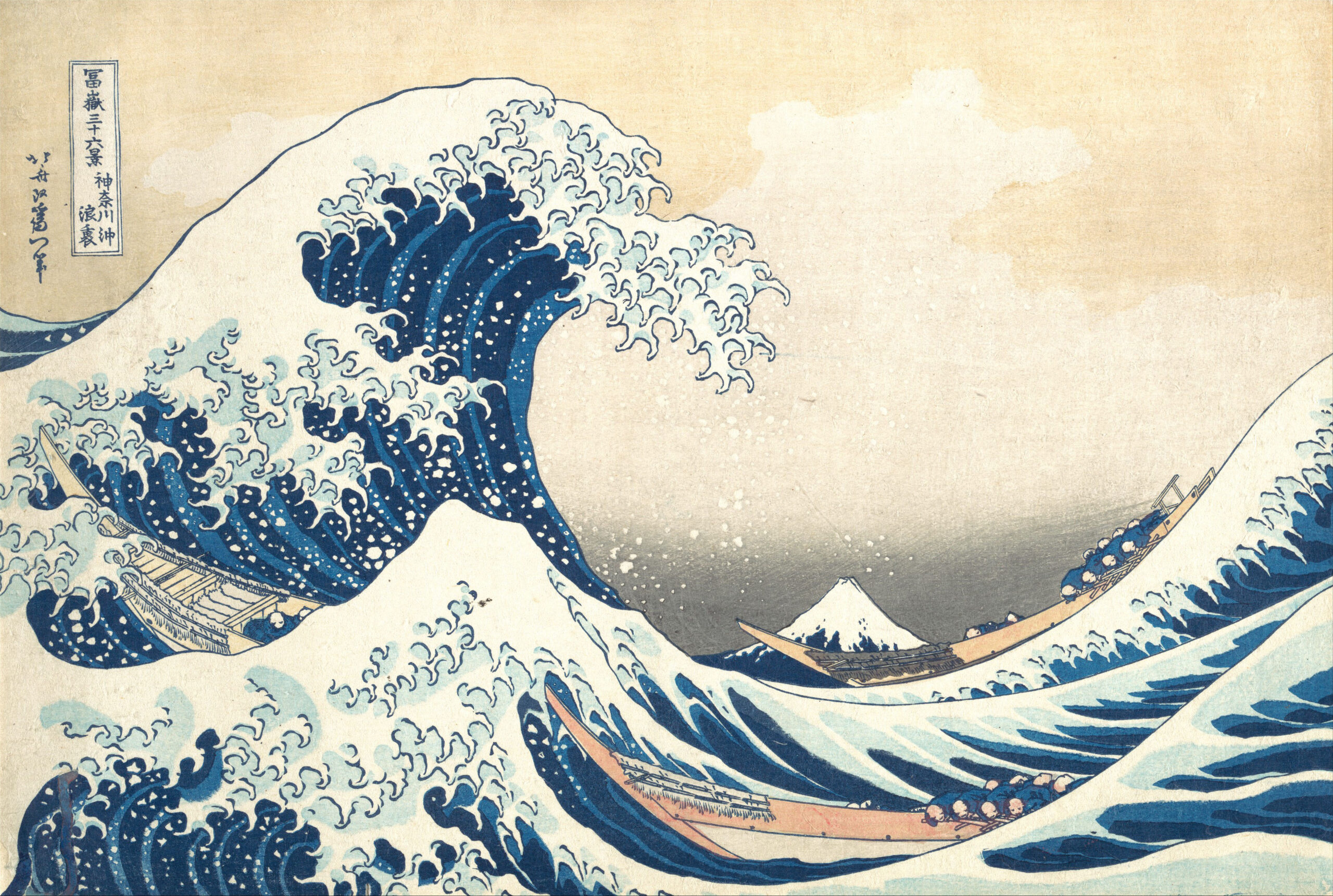Rising Sun
Like many Americans who have visited Japan, we have experienced initial “Lost in Translation” sensations. The long flights, the jet lag, and the many cultural differences can combine to produce feelings of disorientation upon arrival. After a short while, though, we regained our footing enough to embrace the wonders that we discovered, both subtle and profound, in the Land of the Rising Sun.
A number of Jun’ichirō Tanizaki’s many works explore the contrasts between East and West. Known primarily as a novelist, he was once short-listed for the Nobel Prize. He also published a variety of essays, including one in 1933 on Japanese aesthetics called “In Praise of Shadows.” An English translation of the essay by Edward Seidensticker came out in 1977, more than a decade after Tanizaki’s death.
The quote we selected for this acrostic appealed to us in part because it reminded us of moments we have each experienced in Japan, moments when “immutable tranquility” prevails, whether in Japanese temples, in Zen gardens, or in quiet buildings. In these days of frenzied chatter, many of us crave the spirit of calm his words evoke. With that quote as inspiration, we sprinkled a variety of other references to Japan throughout the puzzle, our favorite being “origami” and its clue – “in-creasing activity?” How many did you spot?
We also used the acrostic to honor Bob Newhart, who passed away this summer after a remarkable, and remarkably long, career. Here’s a clip of him and Suzanne Pleshette, his co-star on the show that bore his name:


“Immutable tranquility” says it all. One of my favorite programs is Core Kyoto. One can savor Japan’s aesthetics in its thoughtful episodes. Very beautiful Acrostic.
Arigatou gozaimasu.
I wanted the “Metaphorical enclave” to be PLATOS CAVE, and the only Japanese clue I got first time through was TSUNAMI, but otherwise this went pretty fast. This is kind of an anti-Halloween quote – I’m not sure I equate darkness with “immutable tranquility”!
“Thirty-six Views of Mount Fuji” (by Hokusai) includes “The Great Wave off Kanagawa”:
– https://en.wikipedia.org/wiki/The_Great_Wave_off_Kanagawa
which (per the Wikipedia page) has been described as “possibly the most reproduced image in the history of all art.” I’ve seen it on posters, T-shirts, coffee mugs, refrigerator magnets and jigsaw puzzles, among other objects. It was also a source of inspiration for Debussy’s “La Mer.”
Seeing TSUNAMI as an entry is what reminded me of it. I’ve seen the print at both The Metropolitan Museum of Art and LACMA.
Thanks for a terrific puzzle and memories of the fabulous Hokusai show at Boston’s MFA last year. One of those puzzles that look impossible at first glance and reveals itself slowly on the back and forth between clues and text. Really a lovely experience–like its theme.
Another winner!
A lovely acrostic. The Japanese theme helped me get the tricky clue for origami. The Harry Potter clue was tricky too, because either Hallows or Deathly would fit, so I had to wait to get one of the letters from the quote to know which one to pick. A challenging, but steady solving experience.
Hello, solvers! We hope any angst you experienced wrangling clues was offset by the calming tone of Tanizaki’s quote. Meanwhile, another solver we know forwarded us an article — with a title riffing off Marie Kondo — that presents a rather different view of Japanese aesthetics:
https://aeon.co/essays/the-life-changing-magic-of-japanese-clutter
Also, coincidentally, this year and month mark the 60th anniversary of the debut of Japan’s bullet train. We admit we were unaware of that anniversary when creating this puzzle; it would have been fun to try to incorporate a reference to it. Of course, you all appear to be such high-speed solvers that such a reference might have been redundant.
I got the idea of a Japanese theme fairly soon with Rashomon (one of my favorites by Kurosawa) and futons, Zen gardens, etc. I may have a different perspective of Japan having lived there for 2 years, helping to teach English to Jr. High level students. While I love the gardens, Kabuki and Japanese history, I found that even in the early 1990s, the younger generation Japanese had become more modern. I learned that many of the stereotypical aspects of culture there were not the reality. Something one learns by experiencing day to day life, outside of tourism. That said, loved the puzzle and quote.